What Are The Different Types of Noses
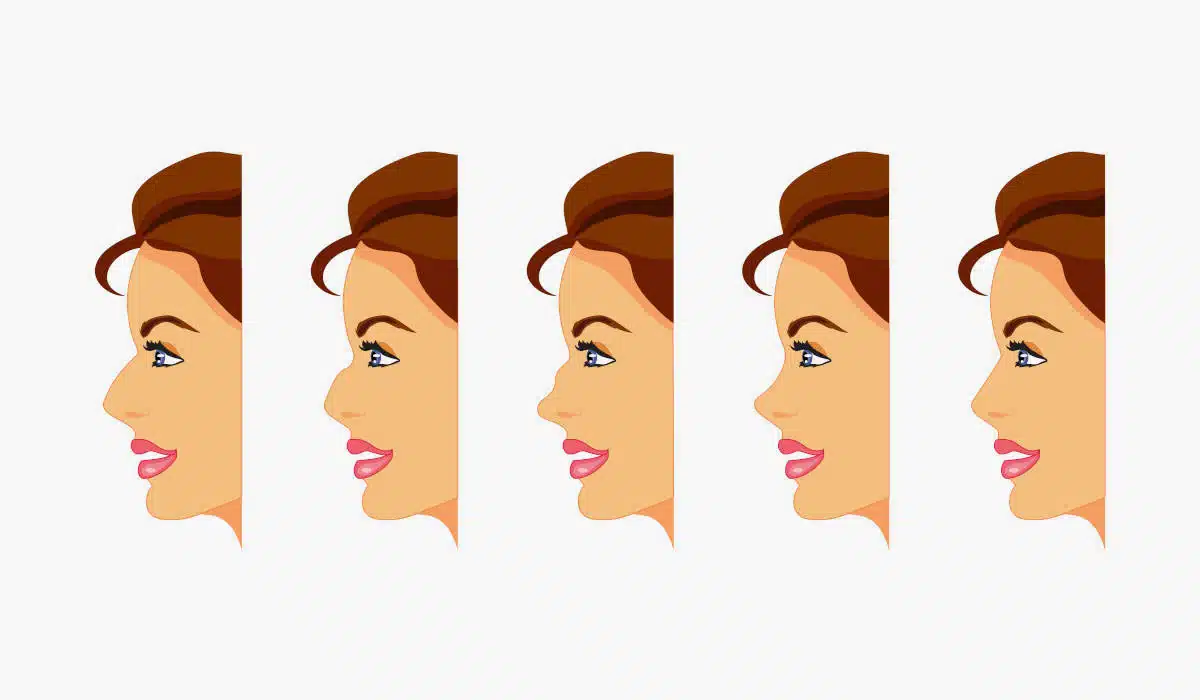
Noses are the primary appendages of the face and are equally diverse in terms of their size and contour. These are very important to our looks and to our capacity to breathe on this planet. Dr. Daniel Becker is a famous provider of rhinoplasty surgery and, for over two decades, has honed his skills for nose surgery. Being an expert in his field of specialization, Dr. Becker has a lot of understanding and identification with the various categories of noses that exist in the diverse ethnic backgrounds.
This article will describe various types of noses, the general features and characteristics of them, and how various types of rhinoplastic surgeries can be designed to correct certain problems associated with different shapes of nose as well as aim at correcting any breathing problems.
What is an “Average-Sized” Nose?
The average size of the nose is not well defined because it may be different from one culture to another, and therefore, the term average-sized nose is more or less arbitrary, just like “perfect nose shape” or similar. In most cases, the size of the nose is also moderate and does not create a contrast to the other areas of the face, nor does not cause distraction.
Different Nose Shapes
Human noses come in a wide array of shapes and sizes, each with its own aesthetic and structural characteristics. While beauty is subjective, understanding the most common nose shapes can help individuals recognize their own features and explore whether they align with personal or cultural preferences. Below is an overview of some of the most recognizable nasal forms seen across populations and in public figures.
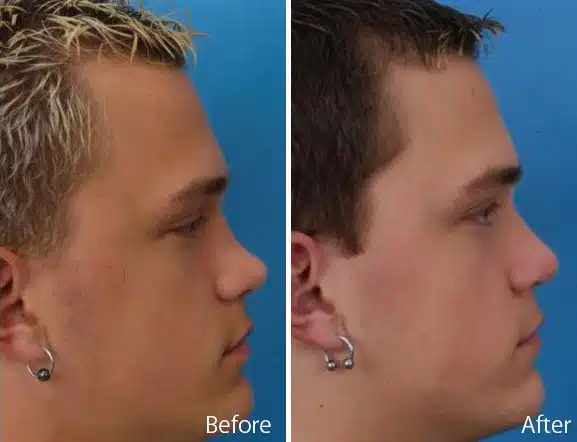
1 Snub Nose (Upturned Nose, Button Nose, or Celestial Nose)
The snub nose, also referred to as a button nose or celestial, is the type of nose with a very short bridge with a round and upward tip of the nose. Such a nasal tip is aesthetically pleasing as it is associated with infancy and can be observed in Hollywood stars such as Elizabeth Taylor and Emma Stone.
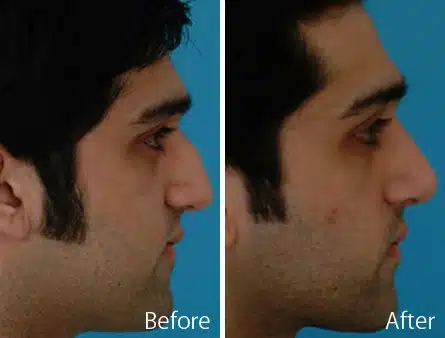
2 Bumpy Nose
A bumpy nose, or more precisely, a hump nose, is a situation in which there is a hump, that is, a knot on the nasal septum. This nose shape can define an individual’s look or a unique personality and can be observed in Owen Wilson and Barbara Streisand, respectively.
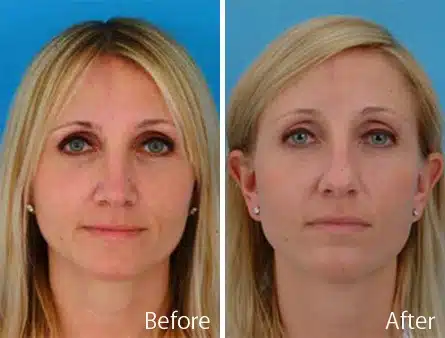
3 Fleshy Nose
A fleshy nose, which is also called the pudgy nose, is, however, typified by a larger size of the nasal structure and more soft tissue than usual. Famous Hollywood actresses Jennifer Lawrence and Rebel Wilson, as an example, also have this type of nose. It may look a little rounder or wider, especially because of the extra physical cushioning that is characteristic of the nasal region.
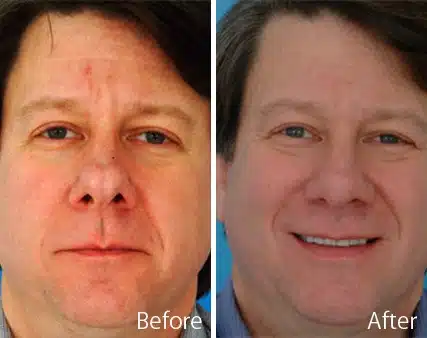
4 Round Nose (Bulbous Nose Tip)
A bulbous nose refers to a rounded nose in nature, and it can be highly pointed and seem to overdevelop slightly at the tip as compared to the rest of the nose structure. The following is a list of some famous people who possess this kind of nose: Scarlett Johansson and Bill Clinton.
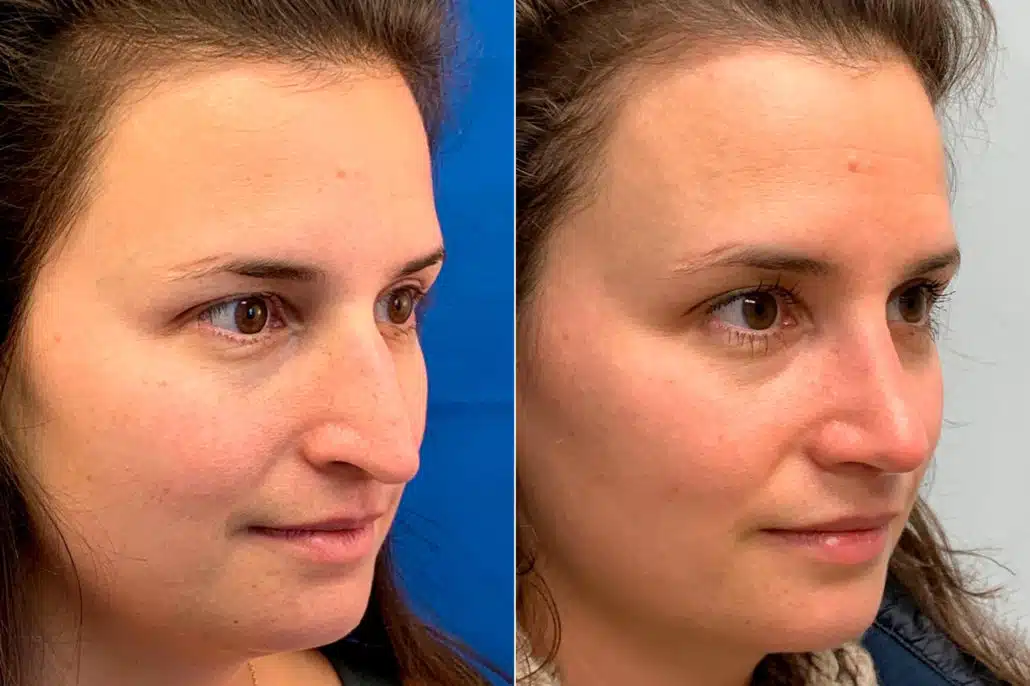
5 Hawk Nose (Long Nose)
Hawk nose is a type of nasal structure in which the bridge of the nose is highly raised and curved downwards like that of a hawk. Some of the celebrities who have this unique shape of a nose are Diana Vreeland and Sarah Jessica Parker.
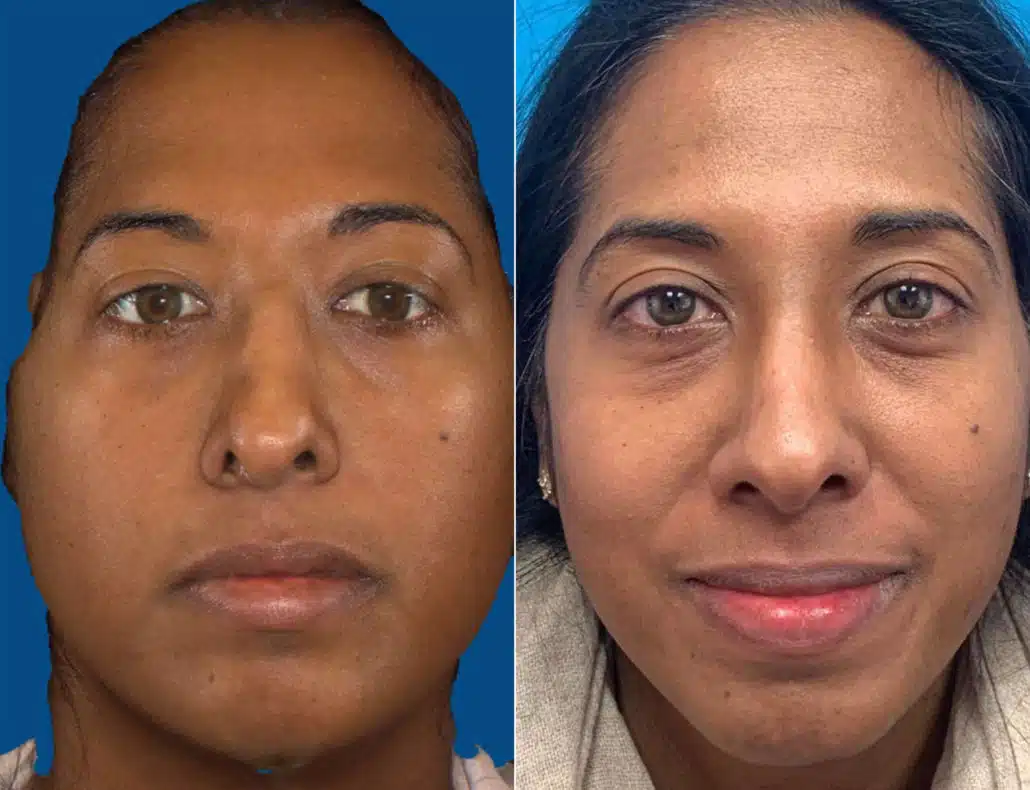
6 Crooked Nose
A crooked nose is defined by a noticeable deviation or curve in the nasal bridge, often giving the nose an asymmetrical appearance. This shape can result from genetics, previous trauma, or developmental issues. Celebrities such as Owen Wilson have famously embraced this distinctive nasal feature, which can contribute to a strong and memorable look.
Secure Your Safe Treatment Experience with Dr. Daniel G. Becker.
Join our satisfied clients who’ve experienced safe, effective treatments.
Types of Nose Shapes by Ethnicity
Nose shapes can be influenced by various factors, including genetics and ethnicity. Here, we will explore some common nose types found in different ethnic groups.
Caucasian Noses
Caucasian noses are often characterized by a prominent bridge and narrow nostrils. There are two common nose shapes of Caucasian noses:
7 Roman Nose (Aquiline Nose or Hooked Nose)
The Roman, aquiline nose, or hooked nose, is the one where the nasal bridge is high and curved downwards, like the beak of a bird of prey. This type of nose is considered strong and noble; famous examples are Julius Caesar and Daniel Radcliffe.
8 Greek Nose (Straight Nose)
The Greek style nose, or straight nose, has straight nasal cartilage in combination with a slightly curved tip. This nose contour is supposed to be aesthetically preferred, and one can find it in celebrities such as Jennifer Aniston.
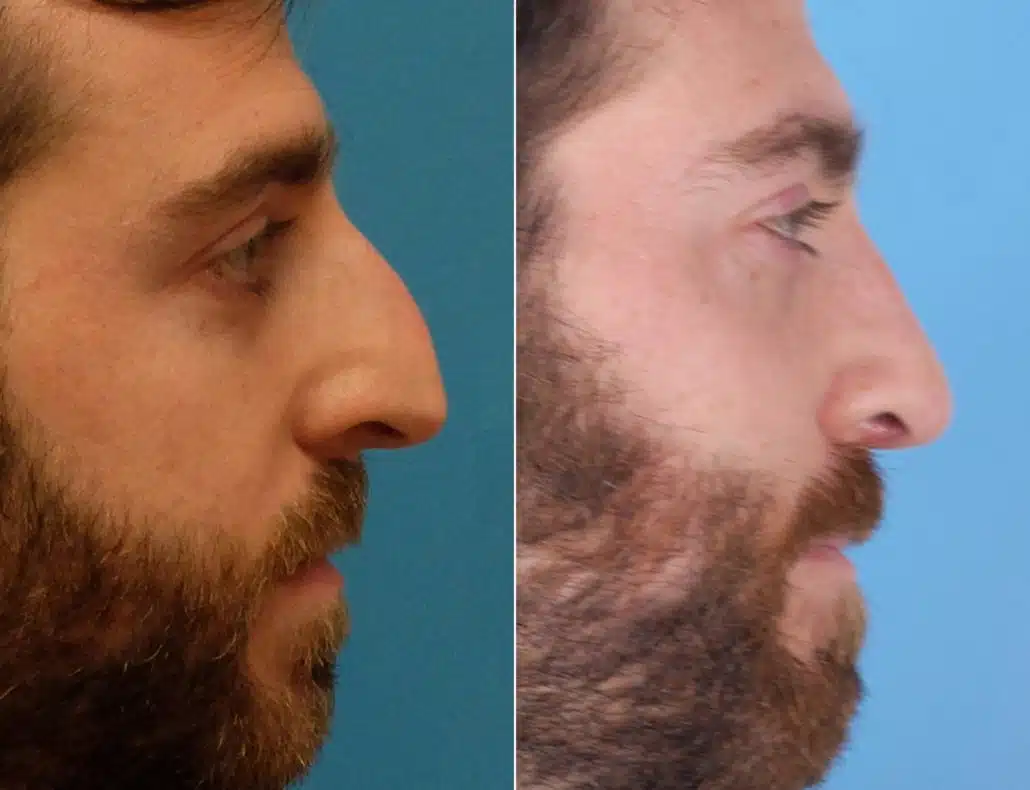
African Noses
African noses are often defined by a broad base and flared nostrils. They most commonly fall into one of two categories:
9 Nubian Nose (Wide Nose)
Among the most apparent features of the Nubian nose shapes, we have the broad base, wider bridge, as well as the round-shaped tip. A Nubian nose is typical for some people of African origin, for example, Barack Obama, former president of the United States, and Gabrielle Union, the movie actress.
10 Flat Nose
The flat nose is characterized by a low, flat nasal bridge and wide nostrils. People of African and certain Asian origins frequently have this type of nose shape.
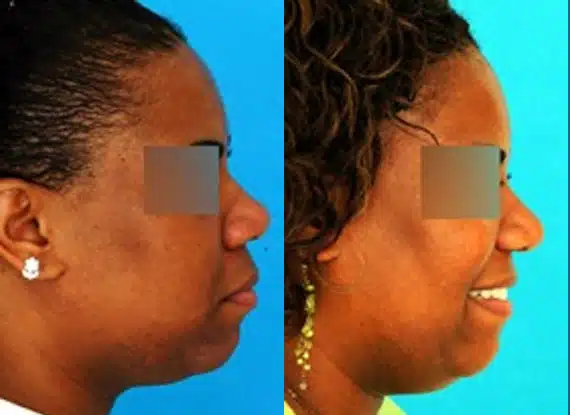
Asian Noses
Asian noses often feature a low nasal bridge and a rounded tip. Asian noses typically come in two different shapes:
11 East Asian Nose
The East Asia nose is characterized by a flat nasal bridge and wide base. This nasal shape is common among individuals of East Asian descent, such as Chinese, Japanese, and Korean individuals.
12 Small Nose
The small nose is characterized by a short nasal bridge and narrow nostrils. People of Southeast Asian heritage, such as Vietnamese, Thai, and Filipino people, tend to have this type of nose shape.
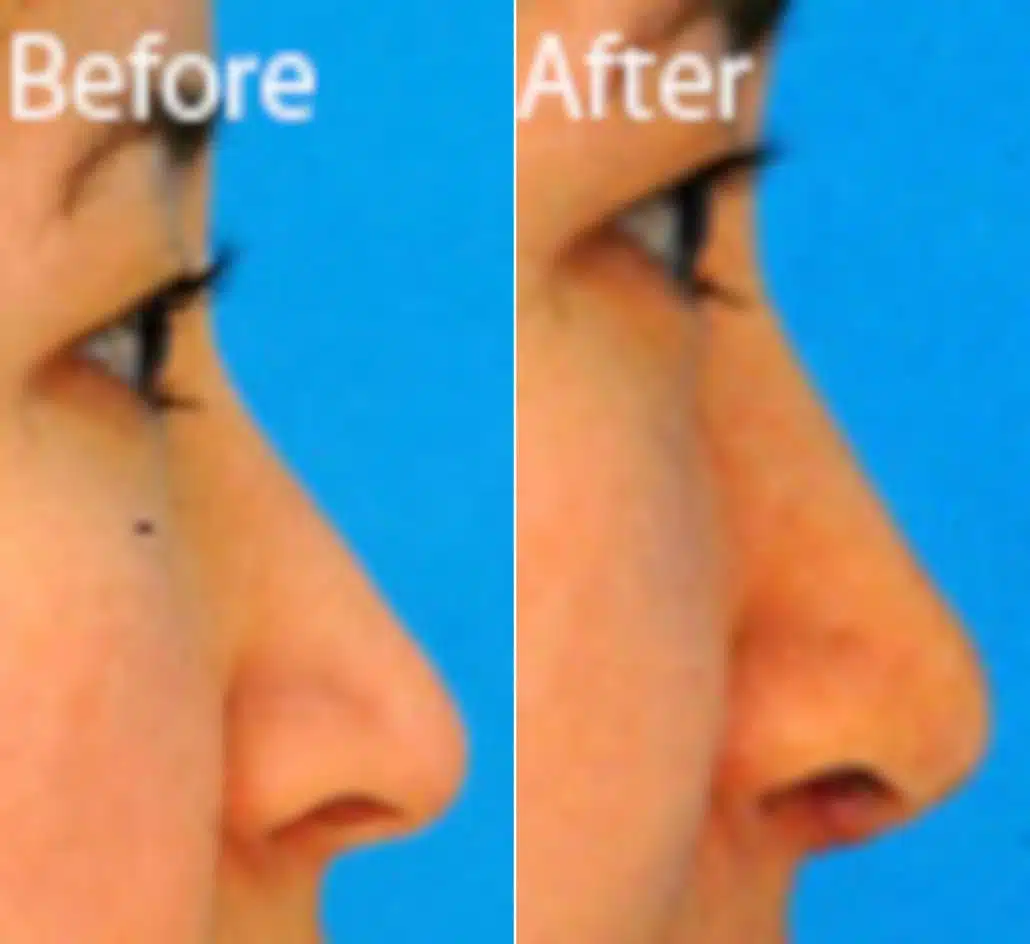
Types of rhinoplasty procedures for each different type of nose
There are different types of rhinoplasty operations according to the type of nose; however, all of them have a physical cause. Some common rhinoplasty procedures include:
Augmentation Rhinoplasty
Augmentation rhinoplasty is a type of surgery that enhances the height, shape, or projection of the nasal bridge and/or tip. This technique is especially useful for individuals with flat nasal bridges, under-projected tips, or those seeking to improve overall nasal symmetry. Common among patients of Asian or African descent, as well as those with congenital or post-traumatic deficiencies, augmentation rhinoplasty can improve both appearance and function using implants or cartilage grafts for a natural-looking result.
Reduction Rhinoplasty
Reduction rhinoplasty is a surgical procedure aimed at decreasing the overall size of the nose. It is a popular surgical option to address features such as a prominent nasal hump, a wide nasal bridge, or a bulbous nasal tip. This procedure is especially beneficial for individuals who feel their nose is disproportionate to the rest of their facial features, and it can help create a more refined and balanced appearance while maintaining harmony with the individual’s natural facial symmetry and structure.
Alarplasty
Alarplasty is a cosmetic nasal surgery designed to reshape or reduce the width of the nostrils, especially when they appear overly wide or flared. This cosmetic procedure is often chosen by individuals seeking improved facial harmony and a more refined nasal base. Common among patients of African, Asian, or mixed heritage, alarplasty involves removing a small wedge of tissue to narrow the nostrils while maintaining a natural contour and preserving nasal function.
Tip Refinement Rhinoplasty
Tip rhinoplasty is a specialized form of nasal surgery focused on altering the shape, definition, or projection of the nasal tip. It is especially beneficial for individuals with bulbous, drooping, boxy, or asymmetrical tips that may disrupt overall facial harmony. This procedure allows for subtle yet effective refinements that enhance nasal aesthetics and improve symmetry, often without requiring changes to the nasal bridge or bones. It is suitable for both cosmetic goals and minor functional improvements.
Reconstructive Rhinoplasty
Reconstructive rhinoplasty is a complex surgical procedure designed to restore both the appearance and function of the nose following trauma, medical treatment, or congenital deformities. It is commonly performed after injuries, such as fractures, or after surgeries that involve the removal of nasal tissue, including tumor excisions. This procedure often uses cartilage grafts harvested from the patient’s ear, rib, or septum to rebuild the nasal framework. It is ideal for individuals seeking to regain nasal integrity, symmetry, and unobstructed breathing.
Revision Nose Surgery
Revision rhinoplasty is a corrective surgical procedure intended to address complications or unsatisfactory results from a previous rhinoplasty. Patients may seek this surgery due to unresolved breathing difficulties, persistent asymmetry, or cosmetic imperfections such as irregular contours or disproportionate shaping. Because revision procedures are often more technically challenging due to scar tissue and altered anatomy, they require the skill of a highly experienced rhinoplasty specialist to achieve improved form and function while minimizing additional risks.
Post-Traumatic Rhinoplasty Surgery
Post-traumatic rhinoplasty is a reconstructive and cosmetic surgical procedure designed to correct nasal deformities and functional problems resulting from facial trauma. Common causes include sports injuries, car accidents, falls, or physical altercations that lead to broken nasal bones, cartilage displacement, or internal damage such as a deviated septum. The procedure typically involves realigning nasal structures, repairing fractures, and restoring symmetry and airflow. This type of rhinoplasty not only enhances facial appearance but also helps restore proper nasal function and confidence in one’s profile.
Why Choose a Rhinoplasty Specialist as Your Plastic Surgeon
When considering a nose job, it is crucial to choose a specialist plastic surgeon with extensive experience and expertise in the field. Here are some reasons to choose a rhinoplasty specialist as your plastic surgeon:
- Expertise: An expert rhinoplasty surgeon has dedicated their career to mastering the art and science of nose reshaping surgery. They have a thorough understanding of the complex anatomy of the nose and the techniques required to achieve optimal results.
- Experience: A specialist in rhinoplasty surgery has performed numerous plastic surgeries and has a proven track record of success. They have encountered a wide range of nose shapes and issues and are better equipped to handle any complications that may arise during surgery.
- Customized Treatment Plan: A rhinoplasty professional will work closely with you to develop a personalized treatment plan that addresses your unique nose, concerns, and goals. They will take the time to understand your desired outcome and create a surgical plan tailored to your specific needs and facial proportions.
- Natural Results: An experienced plastic surgeon aims to achieve natural, un-operated-looking results that enhance your facial harmony. They understand the importance of maintaining the character and balance of your face while making subtle changes to improve your overall appearance.
- Safety and Patient Satisfaction: A patient’s safety and satisfaction are every rhinoplasty specialist’s priority. They will carefully evaluate your medical history and overall health to ensure that you are a suitable candidate for the procedure and will discuss any potential risks and complications with you before proceeding with surgery.
- Board-Certified Plastic Surgeon: A board certification ensures that a surgeon has undergone rigorous training and examination to meet the highest standards of their profession. In addition, the certification serves as a testament to their dedication to providing safe, ethical, and effective patient care. By selecting a board-certified rhinoplasty specialist, you can feel confident that you are in the hands of a highly skilled and qualified surgeon who is committed to achieving the best possible results for you.
Selecting a rhinoplasty specialist, like Dr. Daniel G. Becker, as your plastic surgeon is essential for achieving the best possible outcome for your nose surgery. Their expertise, experience, and dedication to patient satisfaction will ensure that you receive the highest level of care and results that enhance your facial harmony and boost your confidence.
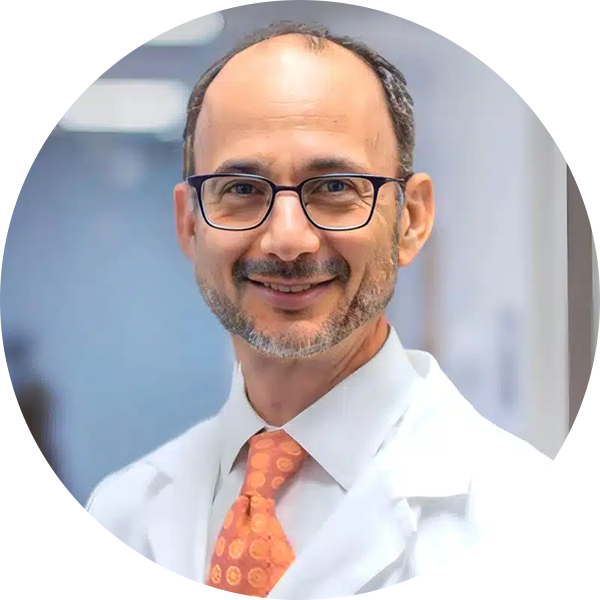
Other Frequently Asked Questions
What is the most common nose shape?
The most common nose shape worldwide is the fleshy nose, characterized by its soft, rounded appearance with a bulbous tip. This nose type often has thicker skin and more fatty tissue, giving it a fuller look. It is especially prevalent among people of European, African, and Middle Eastern descent. While genetics largely determines nose shape, the fleshy nose is noted for its wide distribution across different populations. Its rounded, prominent form is also the most frequently seen in studies analyzing facial features globally.
What is a “Barbie nose”?
A “Barbie nose” is a term used in cosmetic surgery to describe a highly stylized nose inspired by the appearance of a Barbie doll. It typically features a small, narrow bridge, a slightly upturned tip (often called a “ski-slope” shape), refined nostrils, and a smooth, delicate profile. This nose shape is designed to create a youthful, symmetrical, and “cute” look that aligns with doll-like facial aesthetics. While it’s a popular request in rhinoplasty, the Barbie nose is not a naturally common shape and may not complement all face types.
Can you change the shape of your nose without rhinoplasty or revision rhinoplasty?
You can’t permanently change the structure of your nose without rhinoplasty, but certain non-surgical methods can temporarily alter its appearance. Makeup contouring uses shading and highlighting to visually reshape the nose, creating the illusion of a slimmer or straighter profile. Non-surgical rhinoplasty, also known as a liquid nose job, involves injecting dermal fillers to smooth bumps or lift the tip for a more balanced look. Additionally, nose shapers or taping techniques can provide short-term changes in shape, though these effects are temporary and purely cosmetic.